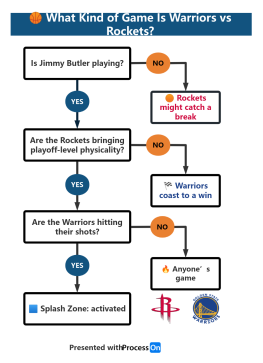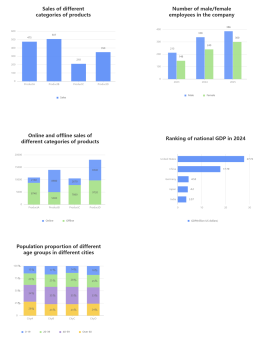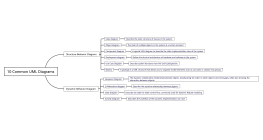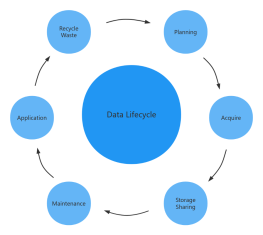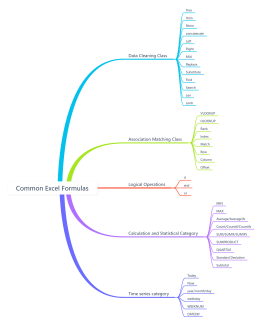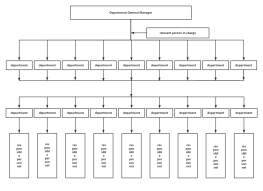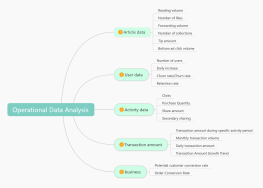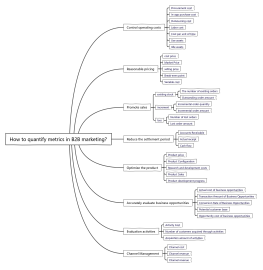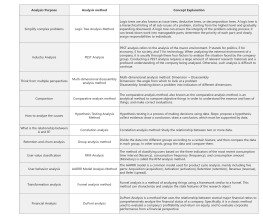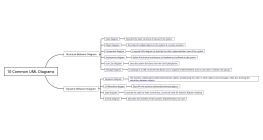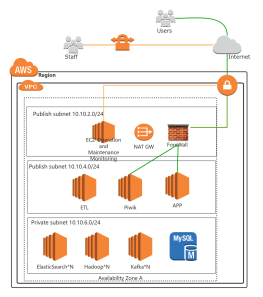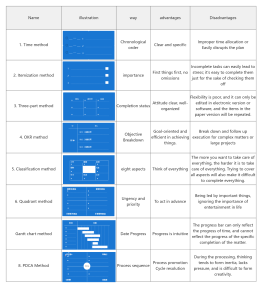Common data indicators
2024-10-22 16:19:20 169 0 Report 0
0
Login to view full content
This mind map delves into the concept of 'Common Data Indicators,' exploring the essential metrics that drive business decisions. Data indicators are not merely numbers; they offer reference values critical for business strategy. Effective data indicators can influence business behavior, enhancing user retention, brand reputation, and revenue. The map outlines various indicators, such as active users, retention rates, and user composition, which provide insights into product health and user engagement. Additionally, it covers business-specific metrics like GMV and ARPU, highlighting their role in assessing financial performance and guiding product development and marketing strategies.
Other creations by the author
Outline/Content
What is a data metric
Not all data is called an indicator,
An indicator must have reference value for the business.
An indicator must have reference value for the business.
There are many data indicators, and good data indicators can change business behavior, mainly to retain users, word-of-mouth communication, maximize the brand, thus establishing a positive brand image, obtaining effective users, and creating more revenue. Good data indicators should provide guidance for the development stage of the product business line.
Monitor products and find problems: Monitor product status in real time through data point monitoring to provide direction and reference for revision.
Verify design: Measure the effect of revision through qualitative and quantitative means.
Discover opportunities and help growth: Discover new business opportunities and product explosion points, and focus on user and data growth.
Verify design: Measure the effect of revision through qualitative and quantitative means.
Discover opportunities and help growth: Discover new business opportunities and product explosion points, and focus on user and data growth.
Common Data Indicators
Comprehensive indicators:
Reflect the overall situation of the product
Reflect the overall situation of the product
Active Users:
Within a specific statistical period,
users who have successfully started or operated
the core functions of the product
(deduplicated by device)
Within a specific statistical period,
users who have successfully started or operated
the core functions of the product
(deduplicated by device)
Daily Active Users (DAU): The number of active devices per day
Weekly Active Users (WAU): The number of active devices per week
Daily New Users (DNU): The average number of new users per day in a week, calculated as: the number of new devices in a week (without duplicates) divided by the number of days in a natural week
Peak Concurrent Users (PCU): The highest number of active devices in a week
Monthly Active Users (MAU): The number of active devices in a month (without duplicates)
Activity (DAU/MAU): Reflects the overall user stickiness and measures the overlap of daily active users during the period.
Weekly Active Users (WAU): The number of active devices per week
Daily New Users (DNU): The average number of new users per day in a week, calculated as: the number of new devices in a week (without duplicates) divided by the number of days in a natural week
Peak Concurrent Users (PCU): The highest number of active devices in a week
Monthly Active Users (MAU): The number of active devices in a month (without duplicates)
Activity (DAU/MAU): Reflects the overall user stickiness and measures the overlap of daily active users during the period.
New users:
After installing the app,
the users who successfully launched
the product for the first time.
After installing the app,
the users who successfully launched
the product for the first time.
Daily/weekly/monthly new users
Registration conversion rate: the conversion from activation to registration.
DNU ratio: the ratio of new users to active users, which can be used to measure the health of the product.
Registration conversion rate: the conversion from activation to registration.
DNU ratio: the ratio of new users to active users, which can be used to measure the health of the product.
Retention Rate:
Users use a product for a certain period of time,
After a period of time,
They continue to use it
Users use a product for a certain period of time,
After a period of time,
They continue to use it
Retention Rate = Users Still Using / Total Initial User Count.
The next day retention rate: The proportion of new users who successfully restart the application the next day.
7-Day Retention Rate: The proportion of new users who successfully restart the application on the 7th day. Experienced a complete experience cycle, have the opportunity to become loyal users.
30-day retention rate: The percentage of new users who successfully launch the app again on the 30th day. After 1-2 version iterations, it can be used as a basis for the quality of the revision.
Facebook has proposed the 4:2:1 theory, where the next-day retention can reach 40%, 7-day retention can reach 20%, and 30-day retention can reach 10%. This is a quite good retention indicator.
Usage time indicator
Total usage duration: The total duration of all usage from app launch to end within a certain statistical period (without deduplication). Average usage duration/single usage duration/new user duration old user duration/time interval... Usage duration related indicators are also important indicators for measuring product activity and product quality.
User Composition Indicator
Returning users: users who did not launch the APP last week but launched it this week;
Continuously active n-week users: active users who have launched the APP at least once a week for n consecutive weeks;
Important users: users who have been continuously active for 4 weeks or more;
Continuously active users: users who have been continuously active for 1 week or more;
Lost users: users who have not launched the APP for n consecutive weeks (1 week or more, but no more than 2 weeks). Lost rate, return rate, etc.
User composition indicators are used to analyze the composition of registered users, which helps understand the health of active users through the structure of new and old users.The definition of important, returning, and lost users is different for each company, and can be used to monitor the health of users by setting up return and loss alerts based on product business needs.
Continuously active n-week users: active users who have launched the APP at least once a week for n consecutive weeks;
Important users: users who have been continuously active for 4 weeks or more;
Continuously active users: users who have been continuously active for 1 week or more;
Lost users: users who have not launched the APP for n consecutive weeks (1 week or more, but no more than 2 weeks). Lost rate, return rate, etc.
User composition indicators are used to analyze the composition of registered users, which helps understand the health of active users through the structure of new and old users.The definition of important, returning, and lost users is different for each company, and can be used to monitor the health of users by setting up return and loss alerts based on product business needs.
GMV: Total transaction amount, refers to the amount of orders placed, including paid, unpaid, canceled orders, and returns. Once an order number is generated, it is counted in GMV.
GMV is definitely greater than actual sales,
Often reported using GMV to show the scale of the platform.
Often reported using GMV to show the scale of the platform.
Average Revenue Per User (ARPU)
ARPU=Total Revenue / GMV / Payment UV.
Process indicators:
Reflect the user's
Usage behavior
Reflect the user's
Usage behavior
PV (Page Views):
Each time a user visits a page, it is recorded 1 time,
Multiple visits, cumulative visits
Multiple visits, cumulative visits
UV (Unique Visitors):
A visit to a website is counted as one visitor for an IP address.
Within a fixed period, the same client is counted only once.
Conversion Rate:
Conversion Rate = (Number of Conversions / Number of Clicks) * 100%
Churn Rate: Users who have used the product in the past, but for various reasons no longer use it.
The definition of lost users varies according to the different types of products.
Function Usage Rate
Focus on active users, but also pay attention to important features on the product. Such as collection, like, comment, etc., these features are related to the development of the product and the depth of user use.
Bounce Rate (Bounce Bate): The proportion of users who leave the landing page without any operations after arriving.
The key indicator for evaluating whether a landing page is attractive to users
The high bounce rate may be due to the product/activity itself not being attractive enough,
or it may be that this type of user is not the target audience for the product.
or it may be that this type of user is not the target audience for the product.
Exit Rate (ER):
It refers to the percentage of the number of page views of the page that is the "last page" in the session
out of the total number of page views of the website.
It refers to the percentage of the number of page views of the page that is the "last page" in the session
out of the total number of page views of the website.
Exit Rate = Number of Exits on the Current Page / Total Visits in the Session * 100%
Exit rate reflects the attraction to users,
If the exit percentage is very high,
It means that users only browsed a few pages and left
If the exit percentage is very high,
It means that users only browsed a few pages and left
Visit Depth
The depth of user access to the product (the completion degree of the product process)
The depth of user access to the product (the completion degree of the product process)
Duration of use
The total duration from the start to the end of a device's usage within a specific time period.
Analyze the average usage time per person, average usage time per time, and single usage time to measure the stickiness of user product landing, and also serve as a reference for measuring activity and product quality
Number of launches
The number of times users open the application within a certain time period.
Focus on the average number of launches per person, combined with usage time for analysis.
Focus on the average number of launches per person, combined with usage time for analysis.
Use intervals
The time difference between the last time the app was used and the time it was used again.
Use frequency distribution to observe the stickiness of the application to users and the depth of the operational content.
Business indicators:
Reflect specific business situations
Reflect specific business situations
Payment rate
The proportion of users willing to pay among all users
Repeat Purchase Rate
The retention rate of the revenue period
return rate
The return rate is a risk indicator, and the lower the return rate, the better.
Different businesses focus on different specific indicators.
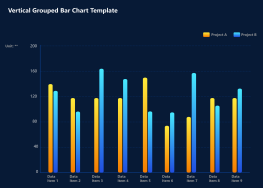
Collect
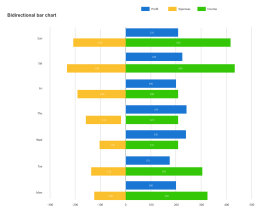
Collect
0 Comments
Next page
Recommended for you
More

